Supporting Autistic Children in Developing Executive Function
Enhancing Executive Function Skills in Children with Autism: Strategies and Support

Understanding Executive Function in Autism
Executive function (EF) is fundamental for managing daily life, emotions, and behaviors, enabling independent functioning. Children with autism spectrum disorder (ASD) frequently experience challenges in EF domains such as planning, cognitive flexibility, emotional regulation, and behavior control. These challenges can impact occupational performance, social participation, and learning outcomes. This article explores the nature of executive function deficits in autism, evidence-based assessment and intervention strategies, the role of applied behavior analysis (ABA) therapy, and practical supports tailored to children's developmental stages to foster EF development effectively.
The Role and Development of Executive Function in Children with Autism
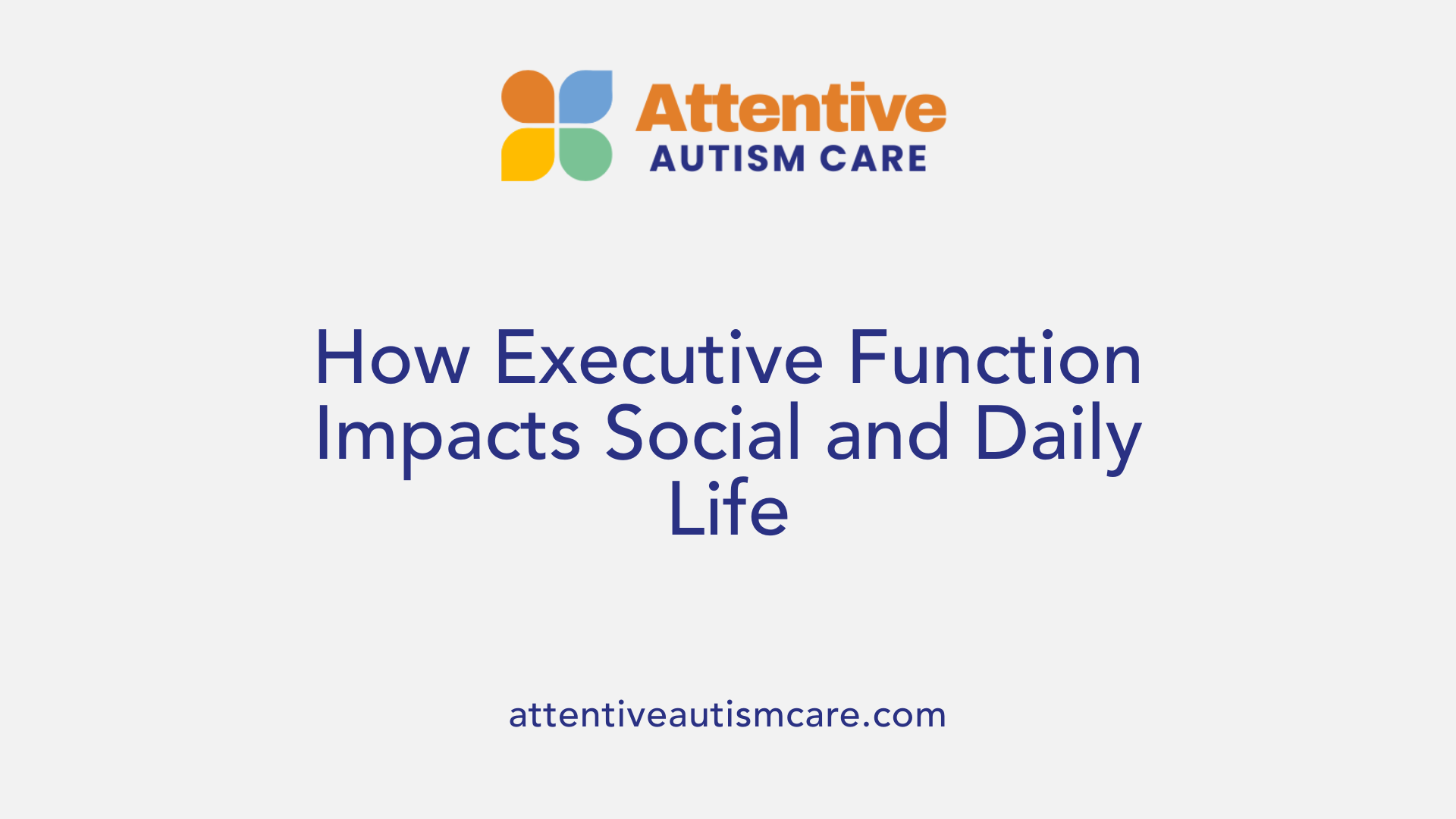
What is Executive Function and What are Its Components?
Executive function (EF) refers to a set of mental skills that help people manage daily tasks, emotions, and behaviors. These skills include planning, flexible thinking, response inhibition (controlling impulses), and metacognition (thinking about one's own thinking). EF enables individuals to initiate tasks, switch between activities, regulate emotions, and solve problems.
How Does Executive Function Develop Neurologically?
EF develops primarily in the brain's frontal and prefrontal cortex areas. This growth begins at birth and continues through childhood into adulthood. As these brain areas mature, children gradually acquire skills such as organizing tasks, adapting to change, and controlling behavior.
What EF Challenges are Common in Children with Autism?
Children with autism spectrum disorder (ASD) often face difficulties with executive functioning. They may struggle with planning activities, switching between tasks or ideas, and regulating their behaviors and emotions. These EF deficits are linked to behaviors such as repetitive actions, challenges with transitions, and limited pretend or symbolic play.
How Do EF Difficulties Affect Daily Life and Social Skills?
Impairments in executive function can significantly impact a child's occupational performance and social participation. Difficulties in planning and flexibility affect daily routines and learning, while challenges with behavioral regulation influence social interaction and the ability to read social cues. These EF-related struggles can hinder independent functioning and quality of life for children with autism.
Identifying Executive Function Challenges: Assessment Tools and Considerations
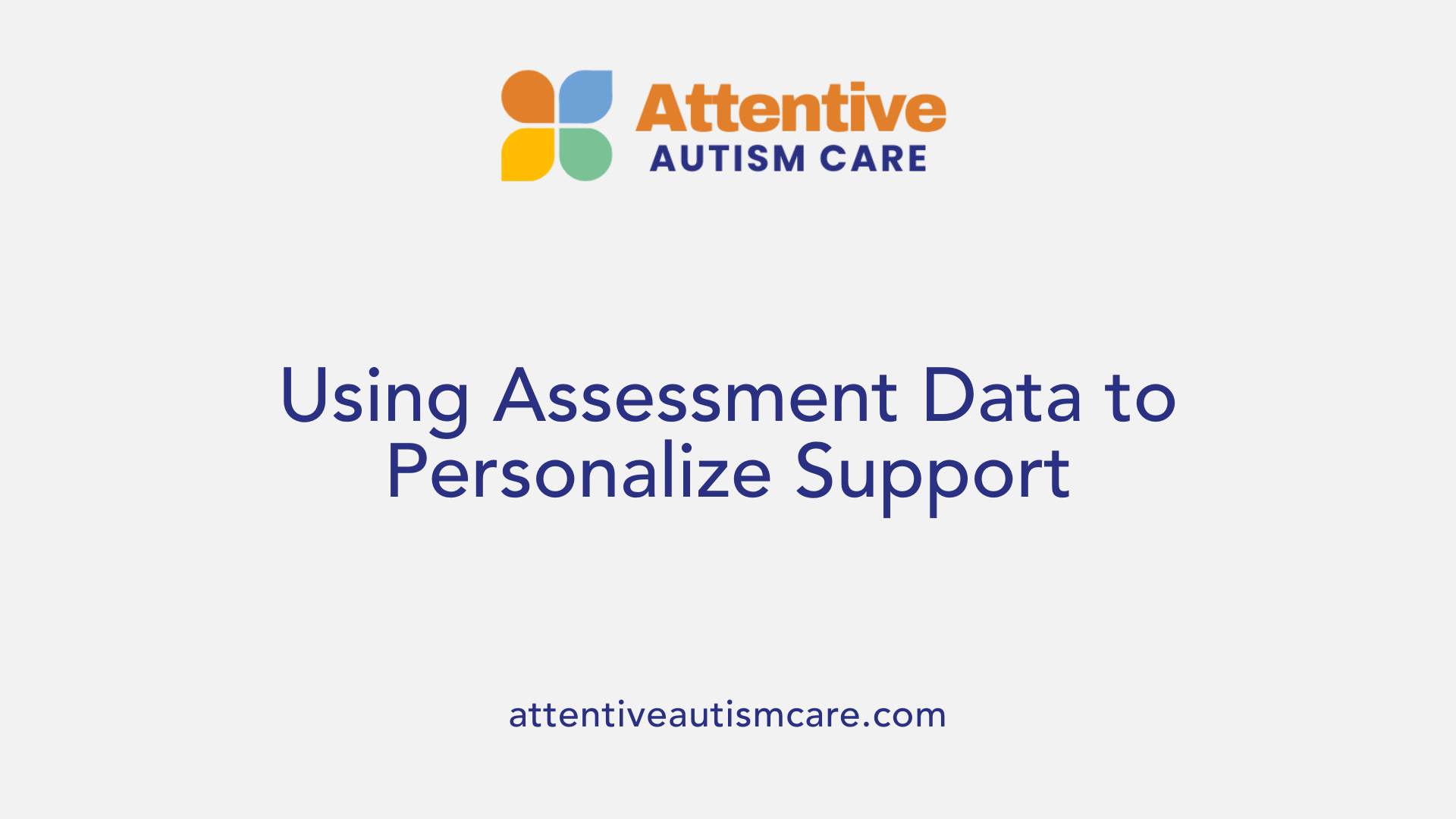
Role of assessment in evaluating executive function and Theory of Mind
Assessing executive function (EF) and Theory of Mind (ToM) is essential to understand the unique challenges faced by children with autism. These evaluations help identify difficulties in planning, flexible thinking, and behavior regulation, which in turn influence daily living skills and social interactions. Early and accurate assessment provides a foundation for targeted interventions that support independence and occupational performance.
Use of standardized instruments such as BRIEF and Theory of Mind Inventory (ToMI-2)
Standardized tools like the Behavior Rating Inventory of Executive Function (BRIEF) and the Theory of Mind Inventory (ToMI-2) are widely used to measure EF and ToM abilities in children with autism. BRIEF helps assess areas such as inhibitory control, working memory, and emotional regulation, while ToMI-2 evaluates understanding of others’ perspectives and social cues, critical for effective communication and social participation.
Importance of occupational profiling under the Occupational Therapy Practice Framework
Occupational profiling, guided by the Occupational Therapy Practice Framework (OTPF, 3rd Edition), provides a comprehensive picture of a child’s strengths, challenges, and daily routines. This process goes beyond standardized tests to consider the child’s interests, environments, and meaningful activities. It ensures that assessment outcomes are contextualized within the child’s daily life, making intervention planning more relevant and practical.
How assessments guide individualized intervention planning
Insights from EF and ToM assessments direct therapists and educators in crafting personalized strategies that address specific impairments. For example, identifying difficulties in cognitive flexibility might lead to introducing role-play or video modeling techniques to improve adaptability. Assessments also help in choosing appropriate supports like visual schedules or digital tools, enhancing task management, emotional regulation, and social skills development tailored to each child’s needs.
Applied Behavior Analysis Therapy: Foundations and Application in Autism Treatment
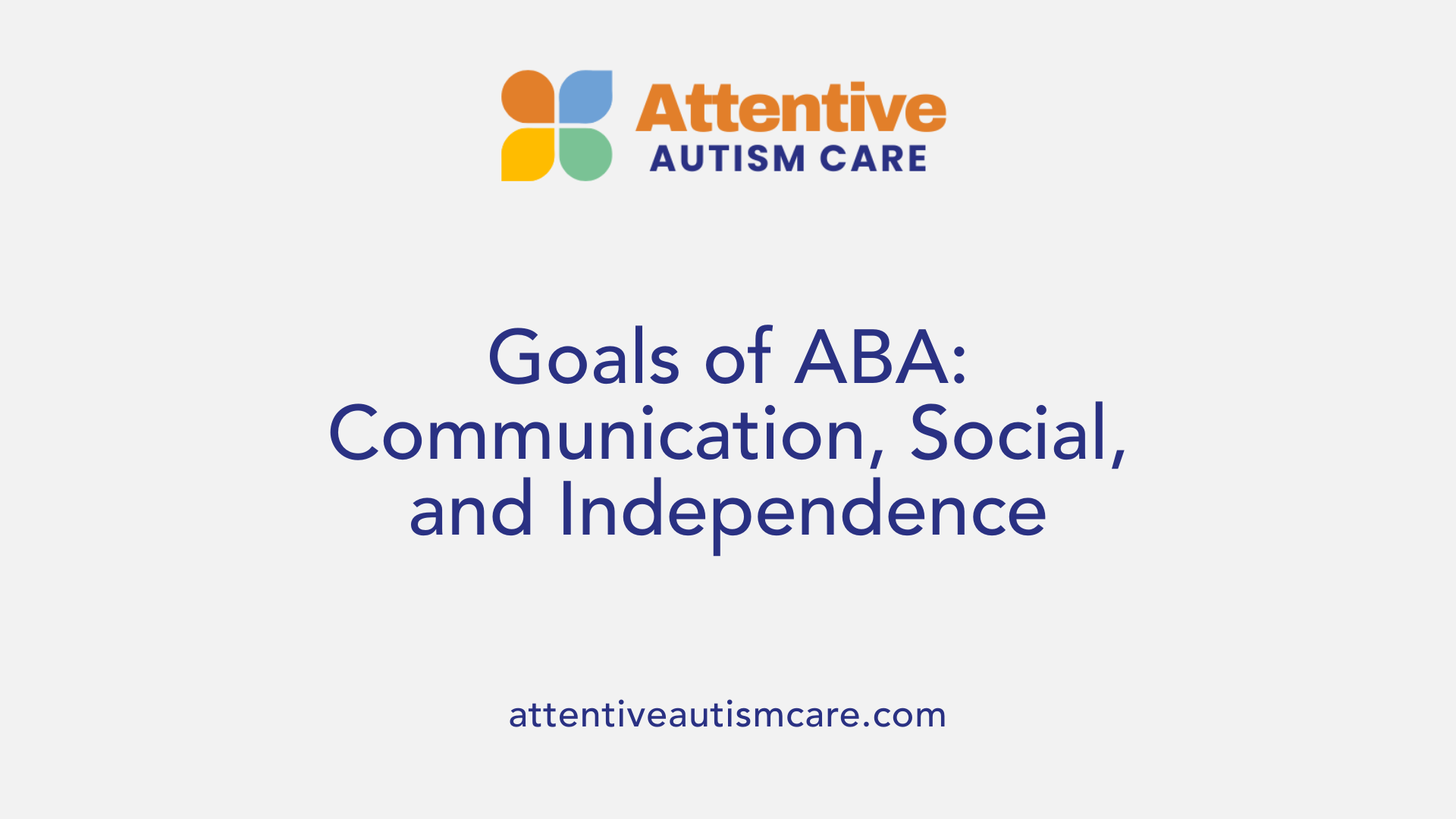
What is applied behavior analysis (ABA) therapy and how is it used in treating autism?
Applied Behavior Analysis (ABA) therapy is a behaviorally based approach grounded in the science of learning and behavior. It focuses on increasing helpful behaviors and reducing those that may interfere with functioning by applying principles such as positive reinforcement. ABA therapy uses individualized treatment plans crafted by trained professionals—including Board Certified Behavior Analysts (BCBAs)—tailored to each person's unique needs and goals.
Principles of ABA therapy and its behavioral science basis
At the core of ABA is the idea that behaviors can be shaped and maintained by manipulating environmental factors. Through systematic observation, measurement, and modification of behaviors, ABA therapists work to build skills by rewarding desirable actions.
Use of positive reinforcement and structured interventions
ABA employs strategies like positive reinforcement, where preferred activities, tokens, or praise are given to encourage targeted behaviors. Structured interventions often include Discrete Trial Training (DTT), which breaks skills down into small, teachable steps, and naturalistic teaching approaches that integrate learning into everyday activities.
Individualized treatment planning and goals
Treatment plans focus on areas such as communication, social interaction, self-care, and academic skills. Goals are specific, measurable, and regularly reviewed to ensure progress and adapt approaches as needed.
Role of ABA in improving communication, social interaction, self-care, and academic skills
ABA therapy has demonstrated effectiveness in improving communication—often using techniques such as picture exchange systems and video modeling. Social skills development is emphasized through teaching turn-taking, understanding social cues, and improving flexibility in interactions. Self-care tasks and academic readiness are also enhanced, enabling greater independence and participation in daily life.
Modern ABA approaches emphasize naturalistic, play-based learning environments that respect neurodiversity, aiming not just to change behavior but to support meaningful participation and overall quality of life for autistic individuals.
Providers of ABA Therapy: Who Delivers Autism Behavioral Interventions?

Who Typically Provides ABA Therapy for Individuals with Autism?
ABA therapy is delivered by a team of trained professionals specializing in behavioral analysis. This team generally includes board-certified behavior analysts (BCBAs), behavior therapists, and ABA technicians. BCBAs are responsible for designing and overseeing individualized treatment plans tailored to the unique needs of each individual with autism.
Where Is ABA Therapy Provided?
ABA services can be offered across various settings including:
- Clinics specializing in autism and behavioral therapy
- Healthcare agencies that provide therapeutic services
- Schools that integrate behavioral interventions within the educational environment These varied settings ensure that therapy can be adapted to meet individual circumstances and preferences.
What Role Do Therapists Have in Educating Families and Caregivers?
An essential component of ABA therapy is the involvement and education of families and caregivers. Therapists work closely with them to teach effective strategies that can be implemented beyond therapy sessions. This collaboration helps reinforce progress and promotes skill generalization in home and community settings.
Why Are Credentials, Oversight, and Access Important?
Credentials such as BCBA certification guarantee that providers have met professional standards for competency and ethics. Oversight by certified professionals ensures treatment fidelity and effective outcomes. Additionally, families must consider factors like insurance coverage and provider accessibility when seeking ABA services to ensure consistent and comprehensive care.
| Professional Role | Setting | Key Responsibilities |
|---|---|---|
| BCBA | Clinics/Schools | Develops and oversees treatment plans |
| Behavior Therapist | Healthcare/Schools | Delivers therapy under BCBA supervision |
| ABA Technician | Clinics/Home | Implements therapy activities directly with individuals |
| Family/Caregivers | Home/Community | Implements strategies taught by therapists |
ABA therapy is a collaborative, multidisciplinary endeavor focused on supporting individuals with autism through evidence-based interventions provided by qualified and supervised professionals.
Goals and Outcomes of ABA Therapy for Enhancing Executive Function
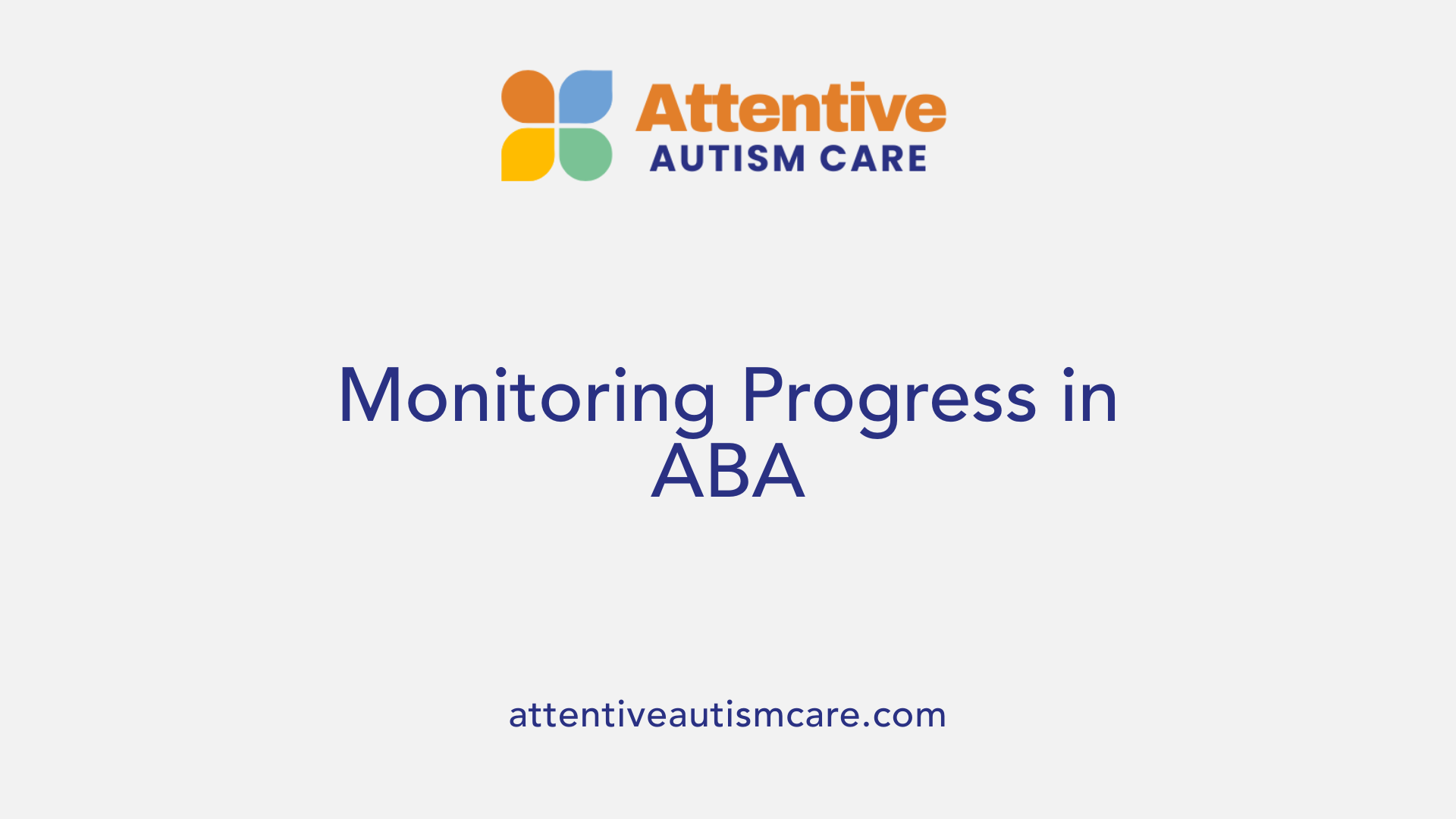
What are the main goals of ABA therapy in autism treatment?
ABA (Applied Behavior Analysis) therapy focuses on a variety of important developmental areas in children with autism, particularly emphasizing improvement in communication, social skills, and daily living abilities. This approach aims to boost language development and enhance social interactions by teaching skills that promote effective communication and relationships.
ABA therapy also targets the reduction of disruptive or harmful behaviors. Through positive reinforcement and carefully designed behavior modification strategies, it works to replace problematic behaviors with more adaptive alternatives that support the child's overall functioning.
Another significant goal is the development of emotional regulation alongside adaptive functioning. Enhancing a child’s ability to manage emotions, engage in play, and navigate social situations contributes to greater independence and more successful integration into community settings.
The therapy is highly individualized, with specific goals tailored to the strengths and challenges identified through comprehensive assessments. These goals often span social skills, independence in daily routines, play skills, and emotional control.
How is progress monitored in ABA therapy?
Continuous data collection and analysis are fundamental components of ABA therapy. Practitioners consistently record the child’s responses and skill acquisition, allowing for objective evaluation of progress. This data-driven approach ensures that intervention plans remain flexible and can be adjusted to meet evolving needs.
Through individualized goal setting and frequent monitoring, ABA therapy strives to provide measurable improvements in executive functioning and related skill areas, ultimately supporting children with autism to achieve better occupational performance and social participation.
How ABA Therapy Stands Apart from Other Autism Treatments

How does ABA therapy differ from other autism treatments?
Applied Behavior Analysis (ABA) therapy stands out due to its strong scientific foundation based on behavioral principles. Developed from the operant conditioning work of B.F. Skinner and refined in the 1960s by Dr. O. Ivar Lovaas, ABA focuses on producing measurable behavior changes through techniques like positive reinforcement and ongoing data analysis.
Unlike developmental or medical approaches, which might center on broader developmental milestones or pharmacological management, ABA zeroes in on teaching specific functional skills. These skills include communication, social interaction, self-care, and other behaviors essential for independence. ABA interventions are intensely individualized, designed to suit the unique needs of each autistic person.
Modern ABA emphasizes naturalistic settings that encourage skill use in everyday environments. It promotes ethical treatment by respecting neurodiversity and prioritizing quality of life. This marks a shift away from past, more rigid methods toward respectful, evidence-based support.
In summary, ABA therapy's distinctive blend of behavioral science, individualized measurable goals, and ethical, naturalistic strategies differentiates it from other autism treatments, aiming to empower autistic individuals to thrive in daily life.
Challenges and Ethical Considerations in ABA Therapy
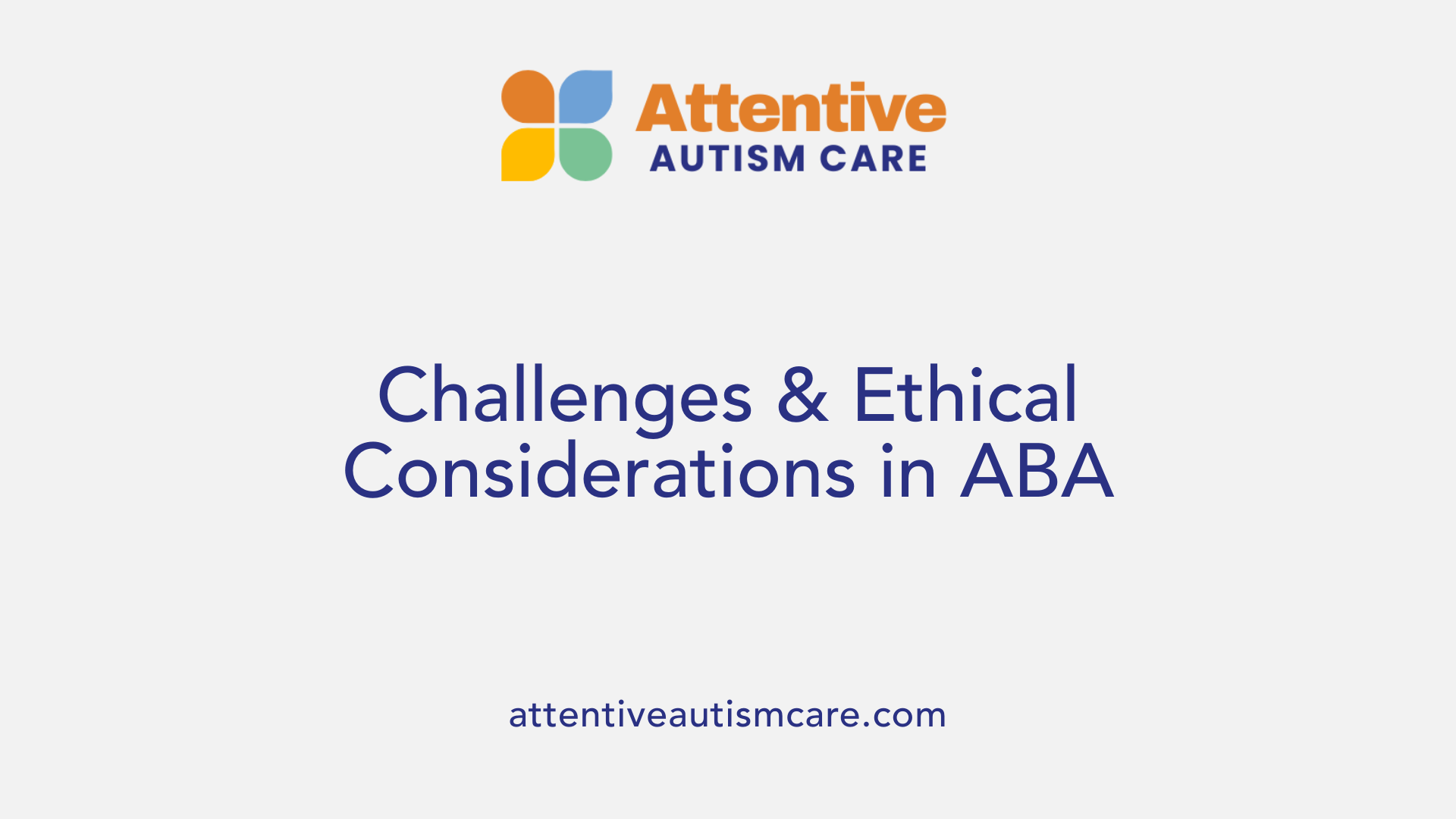
What are some challenges and criticisms associated with ABA therapy for autism?
Applied Behavior Analysis (ABA) therapy has long been a cornerstone treatment for children with autism, but it faces several challenges and criticisms. One major concern is the historically intensive nature of the therapy, which often demands significant time commitments from families and can be costly. This can create barriers to access and place a financial strain on families seeking support for their children.
Critics also point out that traditional ABA may emphasize conformity to neurotypical behaviors. This focus has, at times, prioritized suppressing natural behaviors like stimming, which are important forms of self-regulation for autistic individuals. The therapy's emphasis on compliance and reducing so-called "problematic" behaviors can risk overlooking the importance of respecting neurodiversity—the understanding and acceptance of autism as a natural variation in human experience rather than a disorder to be eliminated.
Although modern ABA approaches have evolved to be more naturalistic and engaging, applying flexible techniques tailored to individual needs, concerns remain that a singular focus on behavior modification might overshadow the individual's autonomy and preferences. Some individuals report that intense intervention focused strictly on behavior change can cause stress or discomfort.
Balancing skill development with respect for a person’s unique neurological makeup and family perspectives becomes essential. Contemporary practitioners often strive to incorporate family values and encourage self-advocacy, ensuring that interventions promote independence without compromising dignity. Ethical practice calls for a thoughtful approach that fosters growth, yet also honors individuality and choice.
Efforts continue within the field to address these ethical considerations, making ABA therapy more collaborative, respectful, and aligned with neurodiversity principles to better support autistic individuals and their families.
Intervention Strategies to Build Executive Function Skills Beyond ABA
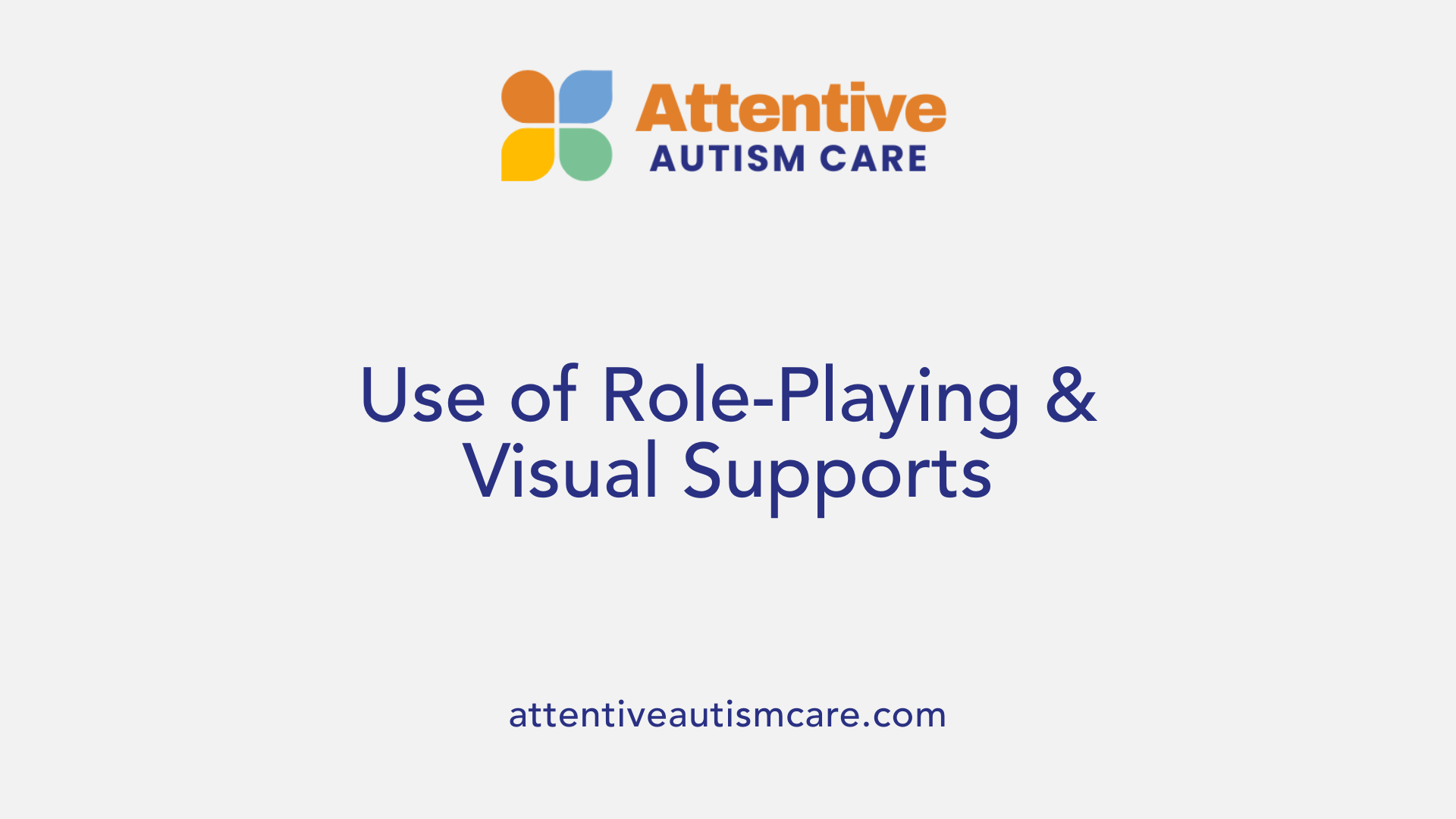
Performance-Based Tasks and Games Such as Simon Says and Pictionary
Using engaging games like Simon Says and Pictionary helps children with autism practice executive functioning skills in a natural and enjoyable way. These activities require planning, impulse control, and cognitive flexibility as children follow rules and adjust their behaviors based on changing instructions. Performance-based tasks challenge the child to initiate and complete sequences, supporting task initiation and response inhibition.
Use of Video Modeling, Turn-Taking, and Social Skills Activities
Video modeling is a powerful tool that shows children how to perform specific executive functions through observation. Turn-taking games encourage practicing patience, waiting, and inhibitory control. Social skills activities further enhance working memory and emotional regulation by simulating real-life interactions, promoting flexible thinking and self-monitoring.
Teaching Cognitive Flexibility Through Planning Alternatives and Problem Solving
Explicit teaching strategies focus on building cognitive flexibility by guiding children to prepare a "Plan B" for unexpected changes. This includes problem-solving exercises where children learn to evaluate multiple options and adjust their plans accordingly. These methods help mitigate stress around transitions and reinforce adaptability in daily routines.
Incorporation of Role-Playing and Visual Models
Role-playing scenarios provide hands-on practice in managing social situations and developing executive control over behaviors. Visual models such as flowcharts or step-by-step guides break down complex tasks into manageable pieces, enhancing comprehension and organization. Using these tools strengthens metacognitive skills and helps children anticipate consequences and regulate their actions effectively.
Supporting Emotional Regulation and Impulse Control in Children with Autism

What are EF-related emotional regulation challenges in children with autism?
Children with autism often face difficulties in managing their emotions, a challenge closely linked to executive function deficits. These challenges may include problems with initiating emotional responses, sustaining self-control, and adjusting behavior flexibly. Difficulties in emotional regulation can lead to struggles in social interactions and daily functioning.
Which strategies like breathwork, stimming, and sensory input management support emotional regulation?
Breathwork techniques help by calming the nervous system and improving focus. Stimming, or self-stimulatory behaviors, provides sensory input that can be soothing when appropriately managed. Sensory input management involves adjusting the environment to reduce overload, such as minimizing noise or bright lights, which helps children maintain emotional balance.
How do visual supports such as emotion charts and behavior charts assist?
Visual supports make abstract feelings tangible and understandable. Emotion charts help children recognize and label their feelings, fostering self-awareness. Behavior charts provide a clear, visual representation of behaviors and consequences, encouraging positive impulse control and offering a structured way to track progress.
What role do pause techniques, self-regulation, and therapies like CBT play?
Pause techniques teach children to stop and think before reacting impulsively, enhancing inhibitory control. Self-regulation strategies empower children to monitor and adjust their emotional states proactively. Cognitive Behavioral Therapy (CBT) offers structured approaches to manage anxiety and emotional responses by changing thought patterns, effectively supporting emotional regulation in children with autism.
Age-Appropriate Supports: Tailoring Executive Function Interventions Across Development

Visual Schedules and Play-Based Learning in Early Childhood
In early childhood, visual schedules are crucial tools that provide structure and predictability for children with autism. These aids help young learners understand daily routines and transitions, reducing anxiety and promoting independence. Play-based learning further supports the development of executive functions by encouraging flexible thinking, problem-solving, and social interaction in a naturalistic environment.
Self-Regulation Techniques, Visual Calendars, and Role-Playing for Ages 7–11
For children aged 7 to 11, strategies become more complex and refined. Visual calendars guide the planning and organization of activities, fostering time management skills. Self-regulation techniques, such as emotion charts and pause methods, enhance emotional control and impulse management. Role-playing exercises allow children to practice social scenarios, improving cognitive flexibility and enhancing problem-solving abilities.
Digital Planners, Project Breakdown, and Mindfulness Practices for Teenagers
Teenagers benefit from digital tools like planners and task managers that support advanced organization and task completion. Breaking down large projects into smaller, manageable steps makes academic demands less overwhelming. Mindfulness practices promote emotional regulation and stress management, addressing executive function challenges common during adolescence.
Gradual Skill-Building Through Routines and Visual Supports
Building executive functioning skills is a gradual process across all ages. Consistent routines and visual supports such as charts, schedules, and timers provide external structure that helps children and adolescents develop internal cognitive strategies. Tailored interventions foster improvements in planning, flexibility, working memory, and behavioral regulation essential for daily life and social participation.
Practical Tools and Environmental Supports to Enhance Executive Function
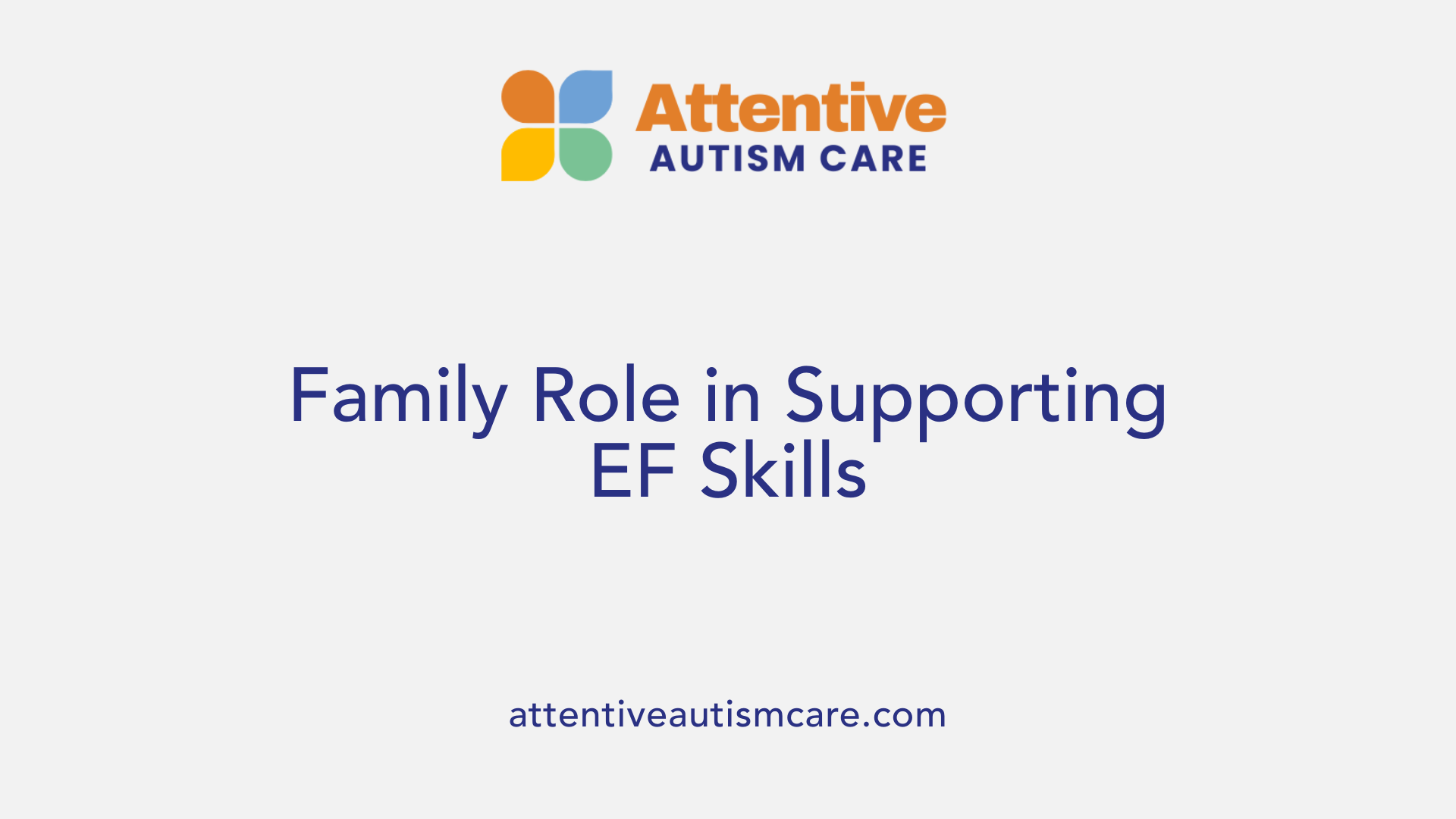
Use of calendar apps, task managers, and visual timers
Modern technology offers several practical tools that can support executive functioning challenges in children with autism. Calendar apps and task managers help break down complex tasks into manageable steps, allowing for clear organization and time management. Visual timers provide concrete cues about the passage of time, aiding in transitions and time-limited activities.
Accommodations like extended deadlines and flexible routines
For children struggling with planning and completing tasks, accommodations such as extended deadlines reduce pressure and improve success rates. Similarly, flexible routines account for fluctuations in attention and motivation, fostering a more supportive environment for task completion.
Creating structured home environments and community resource utilization
Structured home environments with established routines and visual schedules create predictability, which is vital for emotional regulation and planning. Community resources, including autism support organizations and therapy services, offer additional strategies and social support.
Family involvement in daily support and fostering independence
Family engagement is essential for reinforcing executive function strategies outside formal settings. Families can promote independence by supporting the use of practical tools, modeling organizational skills, and encouraging gradual responsibility. This partnership enhances skill generalization and positive daily functioning.
Fostering Independence Through Comprehensive Executive Function Support
Supporting executive function development in children with autism is a multifaceted endeavor requiring individualized, evidence-based approaches. ABA therapy plays a significant role by providing structured, behaviorally grounded interventions to improve communication, social skills, and adaptive behaviors. Complementing ABA with targeted strategies to build cognitive flexibility, emotional regulation, and impulse control enhances overall functioning. Age-appropriate supports, practical tools, and family and community involvement create an environment conducive to growth. Recognizing the neurological basis of EF challenges fosters empathy and guides respectful interventions aimed at increasing autonomy and participation, ultimately improving quality of life for autistic individuals.
References
- Executive Function in Children with Autism Spectrum ...
- Executive Functioning in Autism: Strategies for Adults
- Executive Functioning Skills & Autism
- Partnership for Extraordinary Minds - Executive Function
- Strategies to Support Autism Executive Function
- Applied Behavior Analysis (ABA)
- Applied Behavioral Analysis (ABA) Therapists in San Jose, ...



































































































